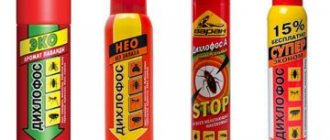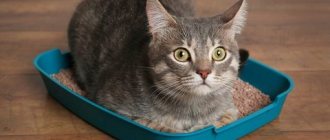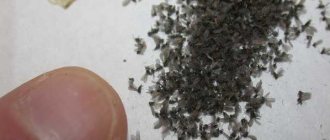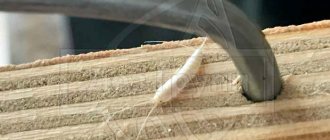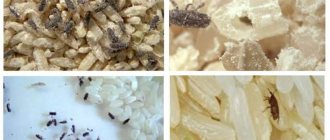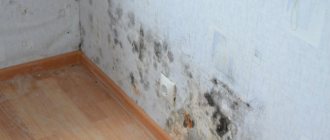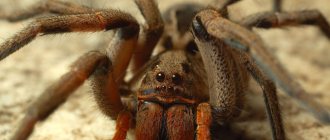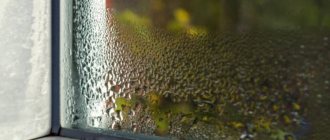Varieties
These unpleasant bugs, which become a real problem once they get into a human home, can be represented by various species, information about which is displayed in table form.
| Name | Large flour beetle | Small | Black |
| Brief description of the imago | Flat body up to 2 cm long, black or brown, lower part reddish | The average body length is 3.5 mm, despite the presence of wings, it is not capable of flight. Possesses special glands that repel enemies with an unpleasant odor | The body is black, shiny, up to 5.5 mm long, the color of the legs and abdomen is somewhat lighter |
| Brief description of the larva | Cylindrical in shape, up to 2.5 cm long, dirty yellow in color. There are small legs with claws, the organs of vision are not formed | Body up to 6 mm long, with short hairs. The head is flat | The flat body, up to 1.3 mm long, is covered with hairs. Color light brown |
| Appearance of the pupa | White in color, has a pair of small spines on the rear ring | Light yellow, shiny, with tiny growths in the back of the abdomen | Dirty yellow color, there are also bumpy growths |
The larvae of all these beetles are usually called mealworms, since they are most often found in flour or cereals, rendering them unusable.
What kind of insect is this?
The insect reproduces rapidly; one female can lay up to 1000 eggs, which produces large offspring, creating colonies. If there are favorable living conditions (plenty of food and a humid environment), the larva will pupate in 20 days.
Large flour beetle
The large beetle is brown in color, but there are also black representatives with a red belly. The body is long up to 3.5 mm. The eggs of beetles are oval, light in color with a stage of up to 10 days. The larvae are called mealworms, they are up to two to three cm long and can move quickly. Such beetles can fly, which mainly happens at night when the lights are on.
For a large beetle, environmental conditions are almost unimportant. They can survive in cold rooms, but if it is -7°C, then death occurs. Warm weather is favorable, in which case they multiply rapidly and it becomes more difficult to remove them.
Small
The small mealworm is a small subspecies with a flat body and wings. This species is unable to fly, but secretes a liquid that will scare away enemies. As a result, an unusual aroma appears in the cereals, by which the presence of mucoed can be determined. The larvae are up to 7 mm in length, the body is yellowish with small hair. The full stage of development will take 50 days, and under good living conditions the insect lives for six months.
Ways to fight on your own
If there are small parasites in the kitchen, it will be difficult to completely get rid of them. It is much easier to prevent their appearance. To do this, you need to regularly inspect the shelves and products, thoroughly clean and wash the shelves, as well as the room itself where food products are stored.
It doesn’t matter whether large or small beetles appear on the grocery shelves, the methods of dealing with them will be the same. It should be remembered that pests like wet, stale foods. Therefore, moisture should not be allowed to appear in cabinets.
It is also advisable not to buy too many cereals if there are no containers for proper storage.
Therefore, moisture should not be allowed to appear in cabinets. It is also advisable not to buy too many cereals if there are no containers to properly store them.
After the contents of the container have been used, you should not immediately add a new portion of food. The jar or plastic container must be thoroughly washed and dried. This is done in order to destroy the eggs of the beetle, if they are there.
Pests of this species do not like the smell of bay leaves, garlic, chamomile, and lavender. Dried herbs in bags should be placed on shelves to repel insects.
Another interesting way is to place a piece of metal wire, metal caps (for example, from a bottle) or nails on the cabinet shelves
It is important to remember that metal products can rust, so they should not be wet, but only wiped with a dry towel
If the appearance of flour beetles cannot be avoided, the food will most likely have to be thrown away. The dishes in which the food was stored, as well as the room itself and the furniture should be washed with a bleach solution.
Of course, you can sort out the grains and sift the flour. But there is no guarantee that there will be no skins left from molting bugs or eggs among the products. Since beetles reproduce quickly, all the work can go down the drain. Therefore, it is best to throw away contaminated cereals or feed them to birds.
Lacewing in an apartment - the most effective ways to combat insects
You can also carry out disinfection using the traditional method. To do this, cereals and flour need to be calcined in the oven at a temperature above 100 degrees or placed in the freezer for a day. After this disinfection, the products can be eaten. But the properties of the products (mostly flour) may change. And few would risk eating such products.
Therefore, it is necessary to disinfect the entire room:
- Bulk products must be thrown away. This also applies to dried fruits and legumes.
- All cabinets and surfaces should be thoroughly cleaned with a vinegar solution.
- The floor and baseboards should also be disinfected, because beetles can appear there too.
- The walls and ceiling also need to be treated.
- The entire washing procedure must be repeated after a few hours.
It should be remembered that if not a single beetle is visible throughout the room, this does not mean that it is completely destroyed. There is a possibility that egg clutches will remain invisible due to their small size. To prevent the whole nightmare from repeating itself after a couple of weeks, cleaning with disinfectants must be thorough and repeated.
Features of the beetle and how to recognize it
Flour beetles belong to the family of darkling beetles, the body size of insects does not exceed 5.5 mm, with the exception of a type of beetle (large beetle). The beetles have an oblong body, the color of the shell is reddish-brown. All members of the family are widespread throughout the country.
Pests reproduce very quickly: one female is capable of laying up to one thousand eggs during her life. This process is actively moving forward, even a few individuals eventually form a fairly impressive colony of parasites. On average, the larva pupates in twenty days, if there are suitable conditions for existence. During periods of unfavorable conditions, the process takes up to four months.
Beetles are sensitive to cold; they cannot tolerate temperatures as low as -7 degrees. At this temperature, not only adults die, but also larvae, which makes methods of combating parasites almost 100% effective.
Experts distinguish several types of hruschak, each differing in appearance and some features:
- large flour beetle. It reaches a length of 1.8 centimeters, the body of the parasite is flat, the color of the pest is black-brown, with a reddish tint. The larva of the parasite reaches a length of 2.5 centimeters and has a brownish-yellow body. The larvae have no eyes, but have tenacious paws and claws, with the help of which they move freely across different surfaces and in bulk products. The parasite's pupa is white, with brownish stripes;
- small flour beetle. The pest reaches a length of only 3.6 millimeters, its flat body has wings, they are cast with red highlights, but the pest is not able to fly. The pest secretes a special liquid that repels enemies, thanks to which the products become saturated with an unpleasant odor. The parasite larva has a yellow body (up to 7 millimeters in length) and small hairs. The pest's pupa is light yellow in color, the entire development cycle lasts up to 50 days, and with high humidity the insect can live for six months;
- small black beetle. Capable of growing up to 5.5 millimeters in length. The pest's abdomen is white, the outside is matte-shiny, cast in black or brown. The beetle is very similar to the first representative of this category of beetles, but differs in its large body. The larvae of the pest are large, light brown in color, and development into a pupa lasts up to one year.
All representatives of the mealworms are called mealworms; they move well in bulk products and are able to withstand temperatures of zero degrees.
Where do they come from and how to get rid of flies in an apartment? Check out a selection of effective methods to combat annoying insects.
Read about how to permanently get rid of house ants in your apartment and prevent the reappearance of insects on this page.
Methods for getting rid of Khrushchak
Sifting flour and cereals if you find a large beetle does not make any sense. This action will get rid of the larvae and adult beetles, but their eggs are very small and will pass through the sieve along with the food. The first thing you can do to combat beetleworm at home is to throw away all cereals, flour and pasta. This method is the most radical. If you feel sorry for parting with your supplies, try other methods:
- roast the cereals in a hot oven;
- Khrushchaki do not tolerate cold, so food can be frozen.
The following steps will help you effectively get rid of large beetles in your apartment:
You need to collect and throw away flour, pasta, cereals and dried fruits from drawers and pantries. Lockers and the like are washed well, and the apartment is ventilated. Cleaning is carried out using disinfectants: vinegar, soda, dishwashing detergent. It is better to treat floors, and especially baseboards throughout the apartment, with strong chemical compounds
Skirting boards are given special attention when fighting any insects; this is their favorite habitat. After cleaning the cabinets, the walls, floor, window sill, drawers, kitchen furniture joints and pantry are treated with a specialized solution, cream or paste against beetleworm
Then you need to leave the room for some time, after which all places are washed again with vinegar. All jars that contained bulk products are also thoroughly washed and disinfected, and they can also be treated with steam. In the future, it is better to use durable sealed containers.
The mucoed is a very unpleasant neighbor and you need to make every effort to fight it.
It is recommended to sterilize jars after contaminated products with steam.
If there is no opportunity or desire to fight the mucous on your own, use the services of special sanitary teams. Workers of such services are experienced in fighting insect pests and know about the habits of mucoeds. While the exterminators are working, you need to remove children and pets from the apartment, as well as hide food, clothing and children's toys. The work of the sanitary service consists of two stages:
- specialists identify all habitats of beetles, larvae and eggs;
- carry out treatment with an insecticide.
Good companies provide a guarantee that the flour beetle will no longer appear in the apartment.
Mucoed is very tenacious, and getting rid of it at home is not easy, so it is better to regularly take preventive measures. The main such measures are:
- above all, regular cleaning and periodic disinfection of the kitchen and pantry;
- treating dishes, cabinets and drawers with disinfectant solutions; it is better to use available solutions of soda and vinegar;
- small cloves of garlic are placed in jars and containers in which bulk products are stored to repel insects;
- Lavender is used to repel beetleworms: bags of lavender or cotton swabs soaked in lavender oil are placed on cabinet shelves;
- Since the flour beetle is a beetle that can fly, it sometimes gets into the apartment from the street.
There should always be mosquito nets on the windows; this will prevent the mosquito beetle and other insects and pests from entering the apartment.
What bugs are found in food?
There are only a few types of small insects in cereals and flour.
They need to be identified in order to understand how dangerous the bugs in flour, pasta, and dried fruits are and what potential harm they can cause to humans. The bread borer is a bug no larger than 3 mm in size and pale brown in color. It penetrates into the apartment along with its favorite food - crackers, cookies, dryers - any hard baked goods, in which passages and excrement will become noticeable over time. In the house, the grinders will not disdain tea, dry herbs, and will try muesli and chocolates. They are noticed on light surfaces when there are already a lot of bugs in the reserves, and they fly into the light in search of a new habitat.
The small mealworm is a small insect (no more than 3 mm) of red-brown shades. Khrushchak bugs, or flour bugs, arrive in the kitchen in bags of flour and starch, and from there they disperse into loosely closed jars and boxes. Their culinary preferences are any types of flour, rolled oats, semolina, wheat. Flour beetles breed in the crevices of cabinets, so furniture also needs to be sanitized.
The red flour beetle is a bug with a light brown or reddish body no more than 2.5 millimeters long. Lives and reproduces in flour and cereal mills, elevators and grain warehouses, if there is soaked grain or rotten flour. Once it gets to your home, it will most likely die, since it does not like dry foods. It arrives in residential buildings with flour, cereals or in packs of cheap grain food for decorative rodents and rabbits.
A close relative of this species, the Surinam mucoed, differs, perhaps, only in color (dark brown).
What is necessary and important to know?
- But the tasty ingredients listed above are only part of the larvae’s nutritional system. Shredded vegetables such as potatoes, carrots, cabbage, turnips, and dried fruits should be placed in the cages daily, as well as aquarium food such as daphnia as protein supplements. To prevent the food from becoming moldy, it can be placed in cans with pre-drilled holes, and the cans can be buried halfway into the substrate. But in any case, the food should be changed at least twice a day.
- If possible, install small drinkers slightly separate from the substrate. The larvae need to drink, but they will not survive in high humidity environments. A good way to drink water is to place a bottle filled with water with a flax wick buried in the substrate.
- Do not forget about maintaining a stable temperature at 25–28 degrees. This can be achieved using electric heating cords that are placed under the bottom of the cage.
- Some people cultivate beetles and larvae in one container. We recommend planting the beetles to prevent the larvae from eating the eggs they lay. The larvae grow for 110–120 days, pupation occurs within two weeks, and the lifespan of an adult insect is 35–45 days. The female can lay about 200 eggs.
- After preparing the cage, the acquired beetles are placed in it. With a sufficient number of individuals, their sexual characteristics will not be so important - adult beetles reproduce very efficiently. To get your first batch of mealworms, you will have to wait two months, then production will become established and constant.
Pupation is a necessary process to ensure uninterrupted worm production. With further breeding, you will need a certain number of adults who will lay eggs. To do this, the grown larvae are selected and transplanted into a separate cage with the same substrate, covered with a cloth, but they are not given any additional food.
Today, there is an increased demand for food such as mealworm larvae.
Since breeding mealworms does not present any particular difficulties, this activity is considered to be a very successful and profitable business. Moreover, it does not involve large financial investments, specialized equipment and spacious premises. If you strictly follow the described rules, after a few months mealworms will appear regularly and in large quantities.
How to remove parasites
It is not recommended to stock up on large supplies of dried fruits, legumes, pasta and flour. You should not store bags of bulk products at home: surely, after three or four months, insects will appear in them - and you will have to throw away the rest of the cereal or flour.
On a note! You can get rid of pests in the kitchen with an integrated approach to solving the problem. To successfully combat crawling and winged uninvited guests, you need to find out the reason for the appearance of insects and figure out what rules were violated when storing bulk products. Perhaps the housewife keeps the cereals in suitable containers, but the kitchen is too damp.
Important details:
- You need to choose products that are safe for the human body. Many insect control compounds are not suitable for treating shelves and containers that contain food. The best option is to use folk remedies inside the cabinets and treat the outside of the kitchen furniture with approved chemicals. If the number of bugs is small, it is advisable to abandon the use of toxic solutions and aerosols;
- Another important point is the cleanliness of the shelves where containers with bulk items are located. Scattered flour, cereals, sugar are an ideal breeding ground for not only bugs, but also other dangerous pests, such as cockroaches.
How to proceed:
- after finding out the reason for the appearance of bugs in the kitchen and choosing the optimal means of controlling household pests, you need to choose a free day for general cleaning in the kitchen and pantry (if there is a specially designated room for storing supplies);
- take everything out of the cabinets, check containers with flour, pasta, legumes, dried fruits, sugar, cereals, identify all the jars and bags that have bugs in them;
- if there are few pests, then you can sift the bulk product through a sieve or fry it in the oven to destroy the pests. This method can be used as a last resort, if it is not possible to immediately purchase new supplies and only when the number of bug colonies is small. The best option is to throw away without regret bulk products contaminated with borers, mealworms, food moths or flour beetles, or feed the cereal to birds on the street;
- the next stage is thorough disinfection of the internal and external surfaces of kitchen furniture. Particular care must be taken to treat shelves, joint areas, corners, and cracked areas. A good option is to add 9% vinegar to 1 liter of water. You need to wait until the surfaces dry well;
- If bugs are actively breeding, you can treat the outer surfaces with an insect repellent pencil: Mashenka, Reid. There is no need to draw lines inside to protect against the penetration of pests: chalk is quite toxic, particles can get on food and lead to poisoning of household members;
- While the cabinets are being ventilated, you can pour high-quality cereals, flour, pasta, and dried fruits into new, clean containers. Bulk products are well stored in glass or plastic jars with lids. Paper bags are not a suitable option: the packaging breaks quickly and actively accumulates moisture. Bulk products, especially flour, easily spill onto shelves and attract cockroaches and other types of insects.
After treating all surfaces, you need to take care of prevention. It is necessary to take into account errors so that the grinder, flour eater, food moth, and other insects do not penetrate into places where bulk products are stored.
Poisoned baits
When fighting bugs, you need to place balls of yolk, boric acid powder and a sweet product: honey, jam, sugar syrup in cabinets, in corners, under kitchen units, near the trash can. If pests crawl out of cans of cereal, they will definitely try the poisoned bait, eventually die themselves, and transfer the components of the mixture to a colony of relatives.
Preparing bait is easy:
- you need to combine 40 g of boric acid with two yolks and a teaspoon of sweet product;
- knead all ingredients thoroughly (wear medical gloves), make small lumps, place in plastic or metal lids;
- place containers in areas where tiny pests can get in;
- every 10–15 days you need to remove the dried bait and add new balls with boric acid;
- if cats, dogs, domestic rodents, or rabbits live in the apartment, then you need to place poisoned baits so that the pets do not accidentally eat the harmful product. The same rule must be followed if children grow up and often put unfamiliar objects in their mouths.
How to get rid of an insect?
First of all, you need to store food correctly, this reduces the likelihood that it will be damaged by pests, and not just weevils.
Methods for controlling beetles in products
It is necessary to review supplies more often in order to identify bugs in time, keep the table and pantry clean, and wipe the shelves with soapy water and vinegar solution. If pests are found, and while there are still few of them, you can sift the cereals and grain; if this is not enough, you will have to fight with insecticides.
Food storage rules
The room where the food is stored should not be humid or too warm. They should be stored away from light in a cool place.
Fighting weevils on indoor plants
Flowers on windowsills can also suffer from the pest. Bugs gnaw through buds and leaf buds, causing them to wither and not bloom. All affected shoots should be cut off and thrown away, the rest should be treated with insecticides Inta-Vir, Fufanon or similar, or the entire flower should be sprayed with mustard infusion (30 g of powder per 1 liter).
Health hazards from eating contaminated foods
When bugs or worms are found in cereals and other products, the question naturally arises: can they be eaten? The answer is negative. It is better to get rid of such products. There are several reasons:
- There is a danger of poisoning or intoxication of the body, especially when products are damaged by mucous due to mold getting into the products.
- There is a high probability of allergic reactions to parasite waste. The most dangerous are pests of flour and semolina due to the difficulty of distinguishing their excrement from the products themselves. Exacerbation of asthma is also possible.
- Low nutritional value of products, since beetles extract all the beneficial substances from them.
The harmfulness of the insect
First of all, cucumber mosquitoes cause harm to plants damaged by root diseases and weakened. Crops such as cucumber and zucchini are especially affected by the pest. The insect enters the greenhouse zone along with planting material, plant soil, manure and other fertilizers containing undecomposed organic materials. Adults appear in
about the time of growing vegetable seedlings.
The damage is caused by insect larvae, which gnaw long passages in the roots and the inside of the stems. This leads to the formation of cracks and rapid withering of the plant. When the root system is massively colonized by larvae (more than 50), the plant rots and dies. In addition to causing direct mechanical damage, cucumber mosquitoes can cause harm to vegetable crops in the form of diseases and harmful mites.
Recently, the harmfulness of the cucumber mosquito has increased significantly in relation to crops such as eggplant, cucumber and bell pepper, which are planted using low-volume technology on mineral wool and peat.
What types of beetles grow in kupas
If pests are found in cereals, it is necessary to immediately begin combating them. First you need to determine what type of beetles has settled in the cereals, otherwise the fight may be ineffective.
As a rule, bulk products infect the following types of insects:
- Mukoed. This is a small pest, distinguished by a light brown tint. The pest belongs to the order Coleoptera and prefers such objects as granaries, mills, etc. for its life activity. Therefore, we can safely assume that the pest enters a person’s home with store-bought products. This parasite lives for about 3 years. During this time, the female lays about 300 eggs. If living conditions are favorable, the pest multiplies many times faster.
- Bread grinder. The insect is distinguished by a light brown tint and grows up to 3 mm in length. Prefers objects such as warehouses, confectionery shops, bakeries, etc. Can eat any baked goods, including crackers.
- Food moth. This is not a large butterfly, up to 1 cm long. The insect lives for about 2 weeks, but during this period the butterfly is capable of laying up to 400 eggs, which quite quickly turn into butterflies, which lay eggs. Soon after this they die.
- Red flour eater. This is a red-colored insect, up to 2 mm long. The pest feeds not only on flour products, but also on spoiled bulk food products.
- Flour beetle. It reaches a length of up to 4 mm and is distinguished by a reddish-brown tint. It can be found in kitchen cabinets where cereals are stored, as well as in bags of bulk food.
Some of the pests can fly, so they can easily get into the apartment from the street. To protect your home from many insects, it is better to install nets with small cells on windows and vents.
story Bugs in the cereal 20 02 14
Watch this video on YouTube
What types of “domestic” insects are there?
Representatives of about 15 species of arthropods take root in the apartments.
Mukoed Suriname
The cereal beetle loves bulk food and breeds in them. The insect is difficult to detect because its body length is only 3.5 or 4 mm. The Suriname mucoede excretes excrement into the cereal, and the product begins to rot.
After eating porridge made from buckwheat with bugs, a person suffers from an upset stomach; the husk causes allergies. The insect lives up to 3 years, during which time the female lays about 5 hundred eggs 1 mm in size. The flour beetle reproduces well at room temperature in the dark; it usually gets into the house from the store along with a bag of cereal.
Flour beetle
The insect easily crawls into cracks, where it hides eggs, from which larvae emerge. In houses and apartments, the black beetle prefers to live in the pantry or settle in drawers in the kitchen. Khrushchak insects penetrate along with bulk products and love raw cereals and wet flour.
Grinder
Miniature beetles cause enormous harm, destroying plywood and cardboard, damaging wooden furniture and walls, and gutting books. The larvae of some types of borer do not disdain:
- medicines and tobacco;
- plaster and glue;
- bakery products;
- cereals and flour.
On the chest of the insect there is a shield, when struck by it the beetle gnaws its way, making a sound reminiscent of the ticking of either a clock or an explosive device.
food moth
A butterfly less than a centimeter in size often settles in the kitchen, where it breeds offspring, burrowing into nuts, dried fruits, and cereals. For insect reproduction, high humidity and regular ventilation of the room are sufficient. In flour, millet, buckwheat, noodles, food moths leave feces and dead larvae, and it is easy to get poisoned with such products.
Red mukoed
A small beetle with an oblong shape, it is most often found in mills, granaries, and bakeries. The insect's body is covered with villi, its hard wings are colored red. The bug breeds in high humidity and prefers to multiply in raw flour and rotten feed.
Rice weevil
An insect with bright spots on its wings, native to South Asia, quickly spread across all continents, with especially many bugs in regions with hot climates. The rice weevil feeds on cereals and does not refuse buckwheat and millet. The female insect lays eggs inside the grain, for which she gnaws holes. The beetle larvae eat all the substances, after a month they gain weight and become pupae.
Fighting methods
What to do if bugs still appear in flour and cereals?
Disposal
The main method of combating the bug is the disposal of affected supplies. Of course, it’s a great pity for spoiled flour or cereal, but if there are insects in it, it means that a couple more days will pass and they will crawl throughout the house. Therefore, it is urgently necessary to tie the bag tightly and put it in another bag and take it to the trash.
After disposal, it is necessary to wash kitchen shelves and cereal storage containers (if any) with bleach, soda or vinegar. After treatment, be sure to rinse the surfaces with water.
Heat treatment
All types of insects die at temperatures above +50 degrees. This can be either boiling water or steam treatment. This method is good for eliminating bug nests in baseboards and crevices that cannot be reached with chemicals and sanitation.
To remove bugs directly from cereals, you can fry them in the oven at a temperature of about 50-70 degrees for 20 minutes. Or put it in the freezer for several hours. Insects die at temperatures below 15 degrees.
When the larvae and adults are destroyed, it is necessary to thoroughly rinse the grains (beans, beans, nuts) with water and wait for the pests to surface. Then, drain the water and rinse the product again so that there are no larvae left in it. After heat treatment, it is better to sift flour and small grains through a sieve 2-3 times.
Chemicals
On open kitchen surfaces, it is better to use special chemicals, which are sold in abundance in hardware stores. Just don’t buy simple remedies for cockroaches and ants to fight the bug. In this case, specialized products are needed, for example, “Antizhuk” or “Karbofos”.
“Anti-bug” helps in the fight against any bug, be it cereal or wood, that damages windows and furniture. The drug is quite effective, but be sure to read the instructions before use, as it is toxic.
To remove insects, you can use “Rogneda” - a powerful antiseptic that can destroy weevils, mucoeds, as well as ants and cockroaches.
Another effective remedy is Lovin Fire Protection. The drug kills the beetle in the shortest possible time, but it must be scattered in places inaccessible to animals, as it is a powerful poison.
Folk recipes
Recipe 2.
Mix boric acid, flour and powdered sugar in equal proportions, which serves as an excellent bait. Scatter the mixture in the habitats of the bugs.
Recipe 3.
Insects are afraid of the smell of bay leaves, garlic, pepper and sulfur. It is enough to put a sprig of bay leaves in the kitchen cabinet or lay out simple matches, and reliable protection against pests will be created.
Simple precautions will help you avoid such an unpleasant problem as kitchen pests
- To prevent bugs from infesting flour and cereals, they must be stored at medium humidity in a well-ventilated area;
- You need to make sure that there are no raw or undried foods (dried fruits, vegetables, wet cereals) in the kitchen cabinets. If there are any, then the mucoed will definitely settle in them;
- It is mandatory to regularly inspect products and shelves. Make sure that cereals do not sit for a long time; long-term storage is the main cause of insects.
- Keep cloves, bay leaves and matches in your kitchen cupboard to repel pests.
- Store cereals and grains in plastic or glass containers with an airtight lid.
- If you notice the first signs of spoilage of food, immediately throw it away or rinse or sift through a sieve.
- Carry out general cleaning at least once a month using disinfectants.
How to remove insects from kitchen furniture?
If there are bugs not only in food, but also in furniture in the kitchen, you need to urgently take measures that will allow you to get rid of not only adult individuals, but also larvae and clutches of eggs.
Step 1. Empty all cabinets of boxes and bags of cereals.
Step 2. Immediately flush any spilled food down the toilet - it may contain parasite eggs.
Step 3. Wipe the surfaces with water and vinegar (1 tbsp per 1 liter of water).
Step 4. All holes and cracks must be filled with boiling water.
Step 5. Wash jars for storing flour and cereals with soap and rinse with very hot water.
Step 6. Wash textile bags in saline solution and dry without rinsing. After this treatment, the bugs will no longer be able to lay eggs.
Step 7. Pyrethrum (Persian chamomile powder), a natural insecticide that allows you to fight household pests without harming your own health, will also help remove insects. It is scattered inside cabinets or poured into fabric bags. Repeat treatment once every 1.5 weeks.
Step 8. You can use bait to lure kitchen bugs out of secluded crevices. There are several recipes for their preparation.
Recipe 1. Mix powdered sugar, borax and fine grains. Place a small amount of the mixture on sheets of paper and place them around the kitchen.
Recipe 2. Combine powdered sugar with borax and millet, crushed in a coffee grinder (take everything in equal quantities). Roll small balls, dry them slightly and place them in cabinets.
Recipe 3. Mix sugar, borax and dry yeast. Pour the composition onto pieces of paper and place on the shelf.
Step 9. The best remedies for food moths are lavender and wormwood. You can use both the plant itself and essential oil. In the first case, small bouquets are made from fresh or dried twigs, in the second, a piece of cotton wool is soaked in essential oil. Anti-bug esters also include basil, geranium, cloves, fir and rosemary.
Step 10. Most beetles are afraid of sunlight. When you come home from the store, pour the cereal into glass jars without lids and place them on the windowsill.
Reasons for appearance
As a rule, mealworms appear in the house as a result of purchasing food in stores or at the market. The reason is poor processing of bulk food products before placing them in packaging, along with violation of storage conditions for such products in warehouses, granaries, supermarkets, etc.
Adult individuals of these insects feel great next to pigeons, as they feed on the remains of food, as well as the remains of their feathers. Therefore, the Khrushchak can easily get into a person’s home with the help of pigeons. Once in a completely different habitat, the pest begins to look for food in the house. Naturally, this is not a problem for him, especially if there is free access to food.
In real natural conditions, the beetleworm can be found in warehouses where bulk food products are stored, in pasta factories, in granaries, in factories for processing bulk food products, etc. As a result, it appears in a person’s house, unwittingly moving with various products. Pests are small in size, so they easily penetrate through cracks in walls, bags, and cardboard packages. In addition, they can easily chew a hole for themselves in paper, cardboard, plastic or fabric. Pest eggs are covered with an adhesive shell and are securely held on any surface.
Flour beetles live in kitchen cabinets, warehouses, places where there is a lot of trash and dust, and also where sunlight does not penetrate. Under certain conditions, pests can actually be found anywhere in an apartment or private house. The most preferable places for them are places with high humidity. Therefore, there is no doubt that these pests inhabit a damp, poorly ventilated pantry or other non-residential premises.
The small mealworm thrives well in heated apartments, while the large mealworm prefers places with high humidity.
Habitats and ways of entering the apartment
This pest species is common in all regions of the country. In addition, it is found in the CIS countries. Flour beetles can live in the natural environment and in human dwellings, various buildings (barns, granaries and factories for the production of certain types of products). It is not difficult for these pests to penetrate a box, bag, or package, since their mouthparts easily gnaw through plastic, paper and woven material.
Flour bugs can penetrate into any crack, climb under the wallpaper, and reproduce here. The insect hides its offspring on any surface. This is possible thanks to the sticky substance that covers the egg shells. Suitable habitats for the beetle are a kitchen drawer or a pantry where supplies are stored. Bugs can hide under baseboards.
The most effective method to eliminate pests completely is to throw away all contaminated products.
The larger the colony size, the more impudently the pests behave. Gradually, the Khrushchaks begin to feel like masters of their home and move around without hiding. Favorite food is damp, musty bulk products. The large Khrushchak loves a humid environment, while a dry and warm microclimate is suitable for its small counterparts. For this reason, small bugs have become more widespread.
Ways to enter the apartment:
- Lesser hruschak is already contained in purchased products. This means that the infection occurred in the warehouse, which was facilitated by improper storage conditions or violations of production specifications.
- The large beetleworm enters houses through ventilation shafts.
How to spot a kitchen pest
Flour beetles (both large and small) and their larvae are quite clearly visible on the surface of flour with the naked eye; they are a little less noticeable among dark grains (for example, buckwheat).
Photo gallery: flour beetles in flour and various cereals
Flour beetles can also be found in store-bought rice packages. Flour beetles also eat semolina. Barley grits are an excellent food for beetleworm larvae. Flour beetles are called flour beetles because they are often found in flour. Oatmeal with larvae and beetles is not the healthiest breakfast.
Additionally, if the flour is heavily infested with maggots, it will become lumpy and unpleasant to the touch. Pests often burrow deeper into the grain. In this case, you will find them only when you collect food for cooking. An unusual odor coming from a bag or container may also indicate that the contents are spoiled.
However, tormentors can also hide in kitchen cabinets, drawers, behind doorframes and under baseboards, so in the process of getting rid of them you should pay attention to these places
Folk remedies for flour beetles
First of all, you should carefully examine the premises infested with beetles. The more accurate the determination of the parasite’s habitat, the easier the fight will be. As a means of prevention, the use of all-natural pest repellents should be considered. These properties are possessed by aromatic substances - essential oils or dry preparations of lavender, Caucasian chamomile, bay leaf.
In industrial warehouse complexes, grain or flour in bags is pulled into hoops made of steel wire or metal strips in order to prevent damage by the bug and its larvae. The smell of steel repels parasites. At home, all this can also be used to repel the beetle. Only the hoops are replaced with metal caps or nails - they work as a natural deterrent no worse than the industrial version of the chosen folk remedy.
Review: At work I came across mealworms in a warehouse. But at home, in the closet, I met them for the first time. I shook out all my existing supplies and tried all the folk remedies. But the pests continued to return with enviable regularity. I paid for professional fumigation, they got it quite inexpensively. Six months have passed and no beetles or worms are visible yet.
How to destroy a parasite
There are several methods to get rid of the flour beetle. Folk remedies, mechanical and chemical methods of control may be suitable for this.
Folk remedies
Folk remedies can help in the fight and natural substances or repellents are used for this. Suitable for this:
- Aromatic substances, including essential oils or lavender, chamomile, bay leaf. It is enough to lay them out in the kitchen; bay leaves can be placed in jars with cereals and flour.
- In industry, hoops based on metal wire are used. The smell of metal can scare away khruschakov. A similar method can be used at home. For this purpose, steel covers and nails are used.
- You can wash cabinets and other habitats with a solution based on vinegar, soda or chlorine, and then treat containers for storing cereals.
- Place garlic, chamomile, orange or lemon zest in the cabinets.
Folk remedies are the safest and do not harm humans, but they effectively deal with worms.
Attention! If Khrushchaki appeared among neighbors, then there will be relapses. You will need to use borax from the pharmacy, add it to millet or granulated sugar, make balls and place it in the corners of the kitchen cabinets. Replace once every two weeks.
Insecticides
The use of insecticides can cause certain problems, because chemicals enter food and the human body. For maximum safety, it is recommended to use several proven tools:
- Phosphine fumigants, for example hydrogen phosphide.
- Contact preparations for spraying grain; solution concentrates can be used.
- Carbonation agents suitable for fog-generating machines.
- Insectoacaricides are made on the basis of pirimophos, bifenthrin or other pyrethoid substances.
- Warehouses can use wet or aerosol disinfestation.
At home, you can use products from the pyrethoid group. Substances harmful to humans are not used; they are often released in the form of gels or aerosols.
Mechanical methods
Having discovered a beetle beetle in cereals, any person tries to immediately throw them away. This is the right decision, because the products are completely spoiled. It is worth noting that washing containers may not give the desired result; beetle eggs stick very tightly to the walls, so it is recommended to use extreme temperatures for beetles as a mechanical stimulus. This option can be carried out even to preserve cereals, but also to kill insects.
It is necessary to place the container in the freezer for several days or put it in the oven for an hour.

